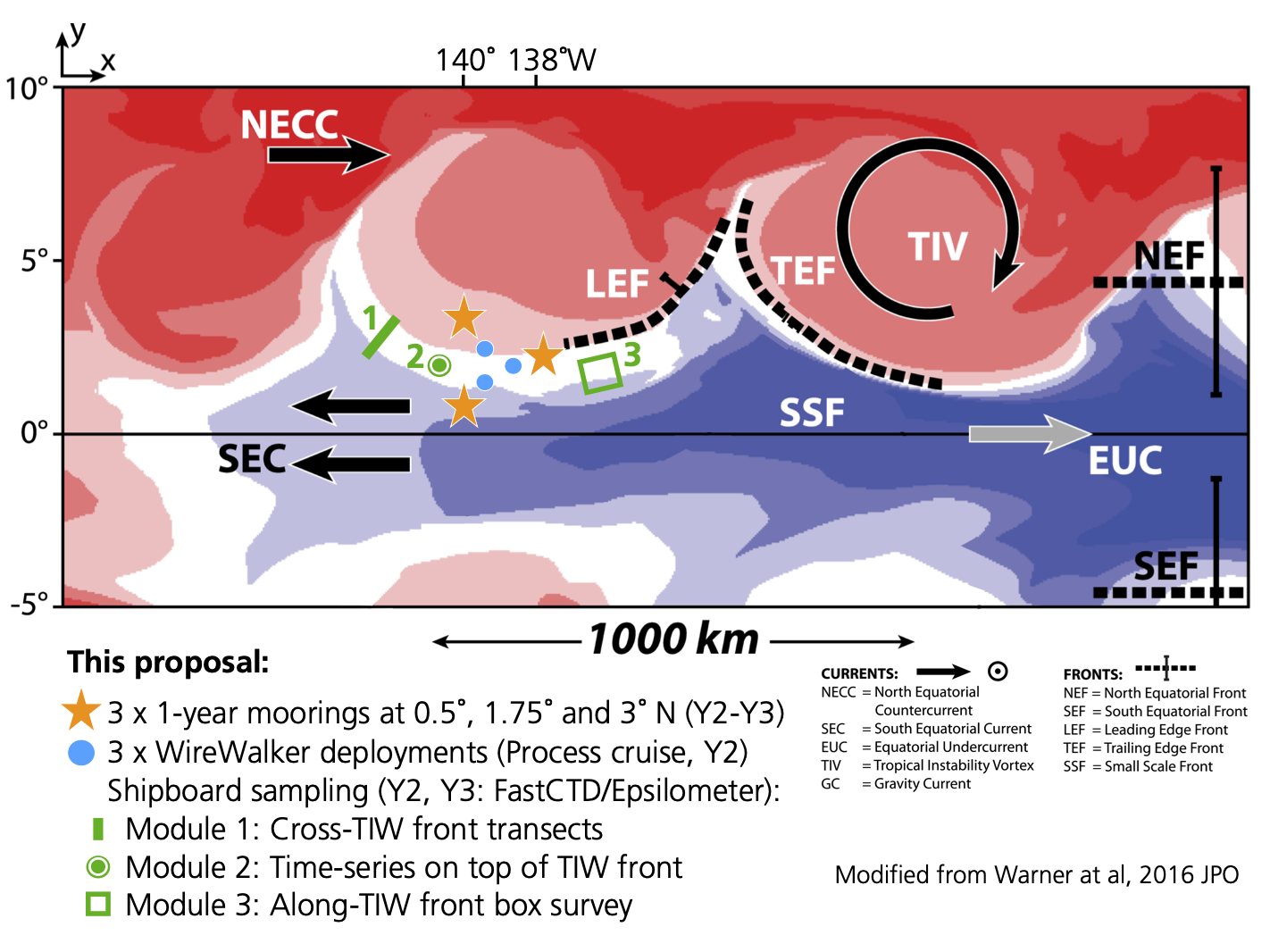GLOBAL INTERNAL WAVES AND MIXING
Figure 1: Mixing in the ocean (Nature - 501, 321–322)
A key feature of the ocean's circulation is the sinking of water at high latitudes and its upwelling to complete the circuit at lower latitudes (Figure 1). This latter part requires the energy of turbulence to occur, so a major thrust of physical oceanography is determining the causes and geography of ocean mixing.
Recent direct observations of turbulence (e.g. Polzin et al 1997) and more recent global maps of direct and inferred turbulence highlight the inhomogeneity of ocean mixing.
Since global measurements of directly-measured mixing are (so far) impractical, another way of estimating the global mixing distribution is to map the energy flux into internal gravity waves, and then to measure their subsequent long-range propagation.
These internal gravity waves are analogous to surface waves, but ride on the ocean’s stratification or its tendency to get colder and denser moving down. Then, the ocean can be thought of a series of layers each of which can support waves on their interfaces between them in like manner to those seen between oil and water. Just like surface waves, these waves can break, which drives most of the turbulence in the ocean. Major sources of internal waves are the tides flowing over topography (see Flow around Topography) and the wind blowing on the surface layer. The former kind, called internal tides, can be detected from space radiating thousands of km away from their sources.
A thrust of our research is to track this energy from sources along the propagation path to its ultimate “graveyard,” which might be the ocean’s continental margins.
CASE: Global Patterns of Diapycnal Mixing from Measurements of the Turbulent Dissipation Rate
Lead by MOD team members, this recent study compiled microstructure observations sampling a wide range of internal wave power inputs and topographic roughness, providing a dataset with which to estimate a representative global-averaged dissipation rate and diffusivity. There is strong regional variability in the ratio between local internal wave generation and local dissipation. In some regions, the depth-integrated
dissipation rate is comparable to the estimated power input into the local internal wave field. In a few cases, more internal wave power is dissipated than locally generated, suggesting remote internal wave sources. However, at most locations the total power lost through turbulent dissipation is less than the input into the local internal wave field. This suggests dissipation elsewhere, such as continental margins.
PROJECTS
TTIDE / TBEAM
Where does internal tidal energy go?
Tropical Instability Waves
Evaluating mechanisms for enhanced mixing below tropical instability waves
Climate Process Team
Improving representations of internal-wave driven mixing in global ocean models





